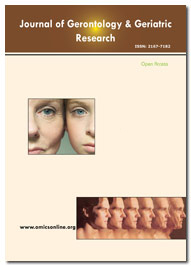குறியிடப்பட்டது
- ஜெ கேட் திறக்கவும்
- ஜெனமிக்ஸ் ஜர்னல்சீக்
- பாதுகாப்பு லிட்
- RefSeek
- ஹம்டார்ட் பல்கலைக்கழகம்
- EBSCO AZ
- OCLC- WorldCat
- பப்ளான்கள்
- மருத்துவக் கல்வி மற்றும் ஆராய்ச்சிக்கான ஜெனீவா அறக்கட்டளை
- யூரோ பப்
- கூகுள் ஸ்காலர்
பயனுள்ள இணைப்புகள்
இந்தப் பக்கத்தைப் பகிரவும்
ஜர்னல் ஃப்ளையர்

அணுகல் இதழ்களைத் திறக்கவும்
- உணவு மற்றும் ஊட்டச்சத்து
- உயிர்வேதியியல்
- கால்நடை அறிவியல்
- சுற்றுச்சூழல் அறிவியல்
- நரம்பியல் & உளவியல்
- நர்சிங் & ஹெல்த் கேர்
- நோயெதிர்ப்பு மற்றும் நுண்ணுயிரியல்
- பயோ இன்ஃபர்மேடிக்ஸ் & சிஸ்டம்ஸ் பயாலஜி
- பொது அறிவியல்
- பொருள் அறிவியல்
- பொறியியல்
- மரபியல் & மூலக்கூறு உயிரியல்
- மருத்துவ அறிவியல்
- மருத்துவ அறிவியல்
- மருந்து அறிவியல்
- வணிக மேலாண்மை
- விவசாயம் மற்றும் மீன் வளர்ப்பு
- வேதியியல்
சுருக்கம்
Breast Cancer in Argentine Women Aged 80 Years and Older
Ilzarbe F, Piccolini J, Lorusso C, Corrao F, Allemand C, Pesce K, Orti R, Guixa H, Wernicke A, Gogorza S and Jauregui JR
Introduction: The frequency of breast cancer in women older than 80 years is nearly 400 cases per 100,000 women. Even though this age group has usually been excluded from research protocols, evidence suggests that elderly women could have less aggressive tumors with better prognosis than younger women. The goal of the current study was to describe the pathological features, the treatments performed and the survival rates in patients over 80 years surgically treated at Hospital Italiano de Buenos Aires.
Methods: All consecutive patients older than 80 years with breast cancer who received surgical treatment between January, 2000 and December, 2010 at Hospital Italiano de Buenos Aires in Argentina were retrospectively reviewed.
Results: Our analysis included 150 patients with breast cancer aged 80 and older who underwent surgical treatment. Breast conservative surgery was performed in 78% of the patients, while 22% underwent mastectomy. Any form of axillary surgery was performed in 56.7% of the cases. The proportion of patients treated with breast conservative surgery who received radiotherapy was 55.5% whereas 15% of patients underwent radiotherapy in the mastectomy group. After a median follow-up of 48 months, we estimated an overall survivomicsonline.orgal rate of 79.3%, with an overall mortality rate of 20.7% and a disease-specific survival rate of 92.6%.
Conclusion: The decision about what type of breast surgery to perform in older women is probably more influenced by tumor: breast volume ratio than by age. In fact, our ratio of breast conservative surgery is near 78%, similar to that obtained in younger patients. The situation is different for axillary staging and radiotherapy, where therapeutic decisions are probably more influenced by the presence of clinically suspicious nodes in the axilla and by patient life expectancy.